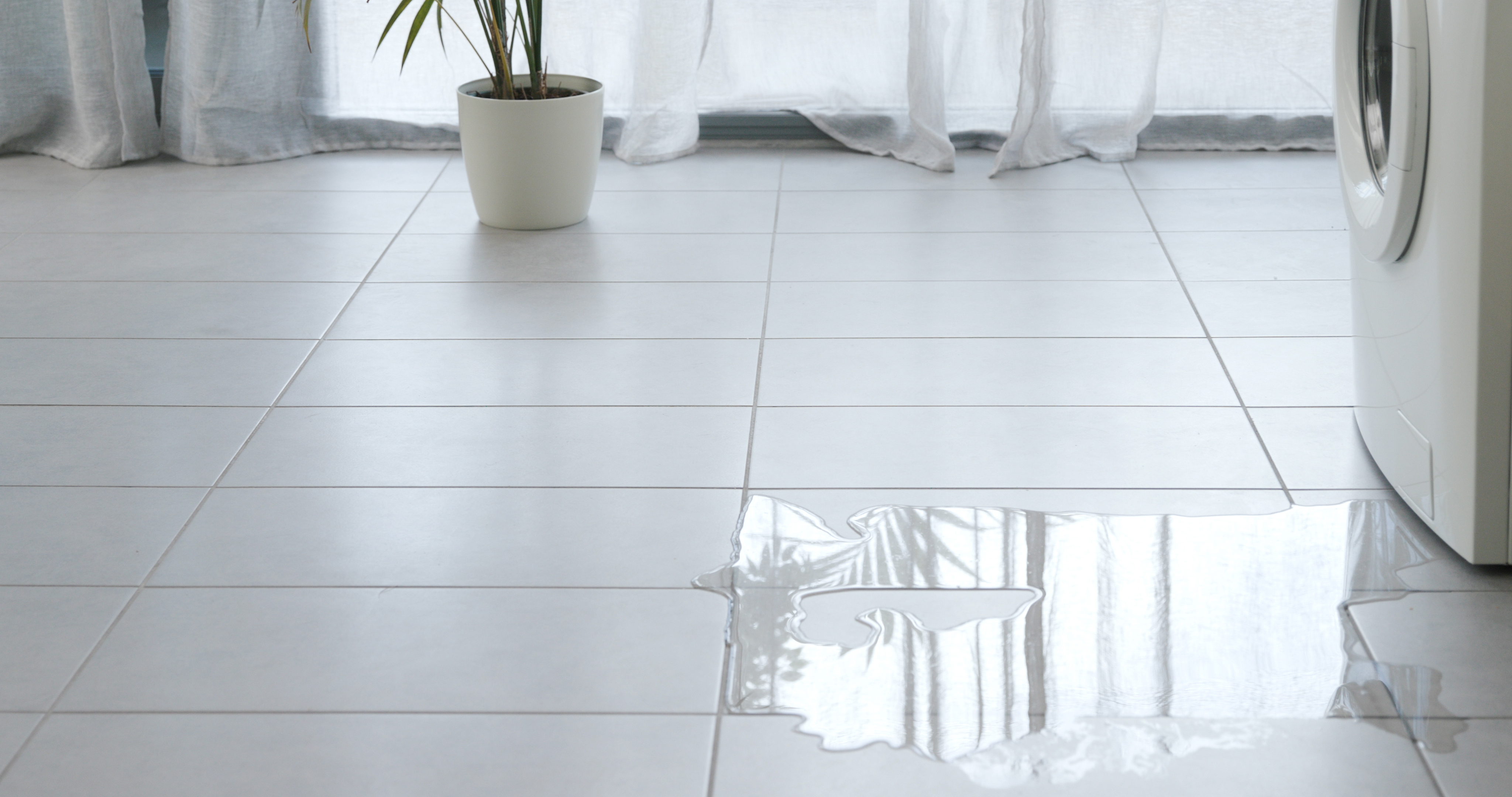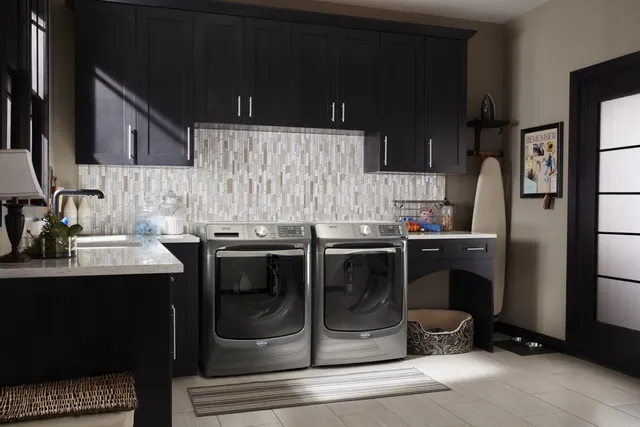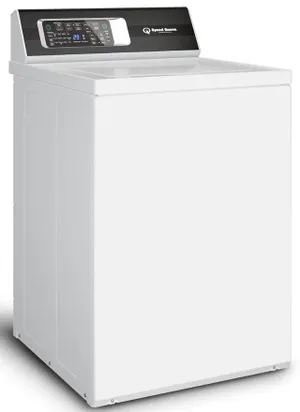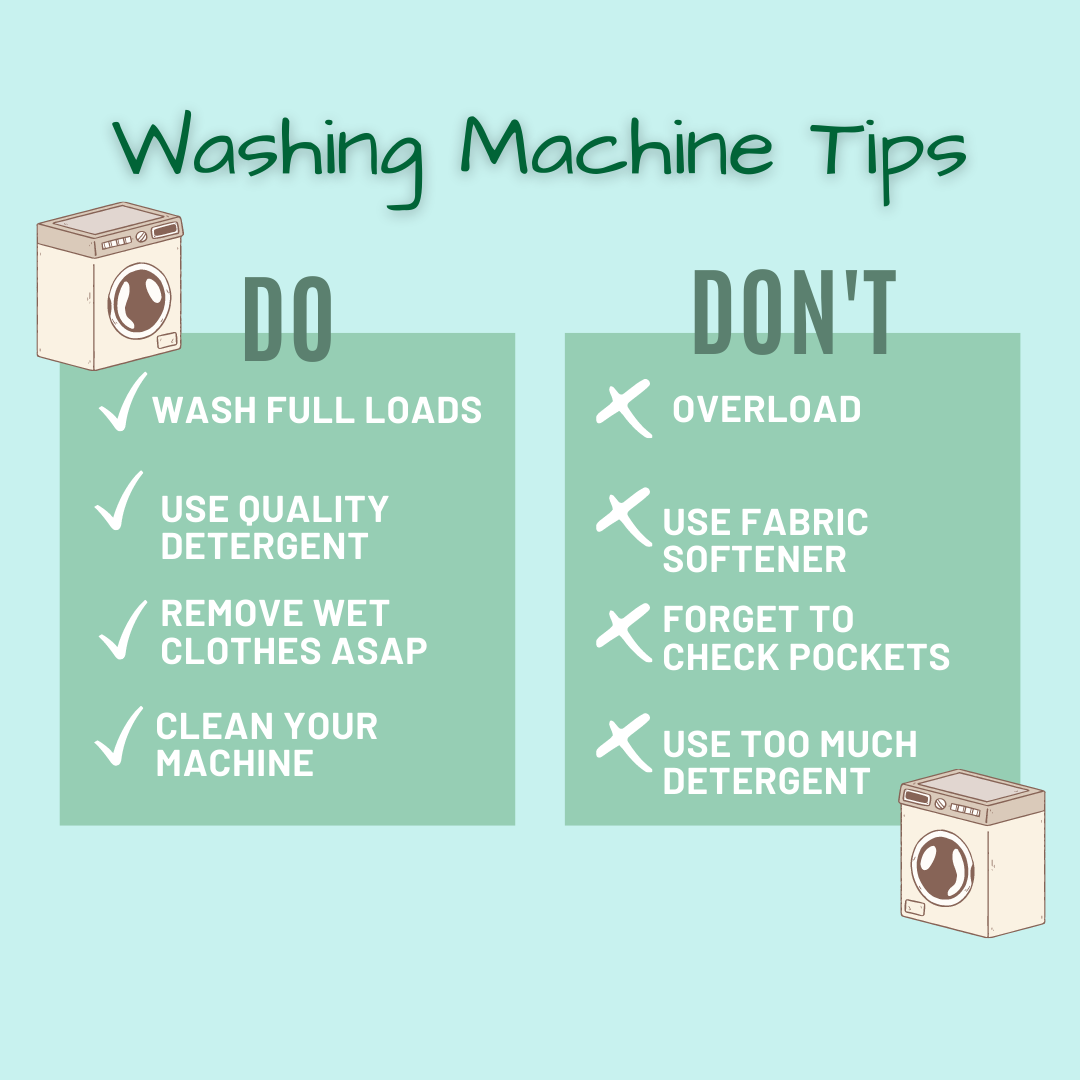
At a Glance:
How To Spot a Washer Leaking from the Bottom
Common Causes of Washer Leaking from the Bottom
3 Washing Machine Replacements
Washing Machine Maintenance Tips
A leaking washing machine is a common issue caused by factors like faulty drain pumps, damaged seals, or clogged hoses.
To fix it, first, turn off the machine and inspect these components for wear or damage.
Tighten or replace parts as needed. If the issue persists, professional repairs may be necessary.
Read on to learn how to identify the source of the leak and resolve it quickly.
Check Out All Our Washer Options
If you need a new washer, check out Texas Appliance for a wide selection of front and top load washers that will fit any home.
Texas Appliance WashersHow To Spot a Washer Leaking from the Bottom
Detecting a leak in your washing machine early on is crucial to prevent water damage to your home and maintain the machine's optimal performance. Here's how to discern if your washing machine is leaking from the bottom:
- Visual Inspection: Begin by checking the floor around and beneath the washing machine. Any puddles, damp spots, or discoloration are telltale signs of leakage.
- Check During a Cycle: Run a short wash cycle while closely monitoring the machine. It's best to view during the fill or drain phases, as these are common times for leaks to occur.
- Examine Hoses: While leaks from the bottom often emerge from the machine itself, sometimes the hoses connected at the back can drip down, making it seem like a bottom leak. Ensure that the hoses are secured, and check for any wear or damage.
- Inspect the Drainage: At times, blockages or malfunctions in the drainage system can cause water to back up and leak out from the bottom.
- Detergent Issues: Using too much detergent or the wrong type can lead to excessive suds, which might result in leaks. Look for foam or soapy residue near the bottom.
- Listen for Unusual Sounds: If you hear any gurgling or dripping noises during a cycle, it might indicate water escaping from the machine.
Common Causes of Washer Leaking from the Bottom
Here are a few common causes of a washer leaking from the bottom:
Faulty Drain Pump
The drain pump's role is to expel the used water from the washer after each cycle. Over time, this pump can get damaged or may wear out, leading to leaks. If this happens, you might notice a consistent dripping or a more substantial flow of water during the drain phase of a wash cycle. The leak is most noticeable when the machine is draining or, in some cases, when it's filling.
To fix this issue, after unplugging the machine, locate the drain pump (typically at the bottom front or back), and check for any visible cracks, damage, or loose connections. If the pump is visibly damaged or continues to leak after ensuring all connections are tight, it may need replacement.
Overfilled Tub or Faulty Water Level Switch
Every washing machine has a component that detects the water level, ensuring it doesn't overfill. If this part malfunctions, the tub might fill with too much water, causing it to leak. When this occurs, water might overflow during the fill cycle, or you might notice the drum is more filled than usual. In some cases, water might leak from other parts of the machine as well, not just the bottom.
If you want to attempt a fix, first, reduce the load size of your laundry and see if the issue persists. If the problem continues, the water level switch (often located behind the control panel) might need checking or replacement.
Door Seal or Tub Seal Deterioration
Washers, especially front loaders, have a door seal to prevent water from escaping. Over time, this seal can degrade or become damaged. Similarly, the main tub seal, located where the transmission enters the tub, can wear out. When this happens, water might seep out from the front of the machine or directly from the bottom, especially during a cycle. Upon inspection, the seal might look cracked, torn, or degraded.
To fix this issue, clean the door seal regularly to prevent debris from causing leaks. If the seal is visibly damaged, it'll need replacement. For the tub seal, it's a more complex fix often requiring disassembly of the machine.
Damaged or Clogged Hoses
Washing machines have several hoses, including fill hoses that bring water into the machine and drainage hoses that expel it. Over time, these hoses can become damaged, or debris might clog them. If there's a leak during the fill cycle, it might be due to a damaged fill hose. Conversely, if water escapes during the drainage phase, a faulty drainage hose or blockage could be the culprit.
It’s good to regularly inspect hoses for any signs of wear, tear, or damage. Replace any hose that looks compromised. Ensure that there are no kinks in the hoses and check for clogs, especially in the drainage hose.
Malfunctioning Tub
The tub inside the washing machine holds the water during wash cycles. A crack, hole, or other forms of damage in the tub can cause leaks. When this happens, you might notice water consistently leaking from the machine.
Unfortunately, fixing a damaged tub often requires a more complex repair or replacement. It's essential to address this promptly to prevent more extensive water damage.
When to Seek Professional Help
If after inspecting the above-mentioned areas you still can't pinpoint the source of the leak, it might be time to call in the experts. Some washing machine issues are intricate and might need a trained eye to diagnose. A professional repair technician can perform a comprehensive assessment and recommend the best course of action. If you don’t feel comfortable performing any fixes yourself, a repair specialist can help with that too.
However, it's essential to weigh the cost of repairs against the age and overall condition of your machine. If your washer is older or has recurrent issues, it might be more cost-effective in the long run to invest in a new machine rather than pour money into repeated repairs.
In any case, ensuring that your washing machine is functioning correctly is essential for the efficiency of your home and to prevent potential water damage or further appliance deterioration. Whether you opt for repair or replacement, taking prompt action will offer peace of mind and restore your laundry routine to normal.
3 Washing Machine Replacements
Here are three washing machines that are excellent replacement options if you discover yours is leaking from the bottom:
Maytag 5.0 Cu. Ft. Metallic Slate Front Load Washer
Model #: MHW8630HC

Maytag Metallic Slate Front Load Washer
This Maytag washer includes excellent features to help prevent future leaks or problems. That includes smartphone connectivity, which allows you to monitor and control your appliance, even when you’re away from home. You can receive alerts when your machine might need a maintenance check, so you can catch any problems sooner.
Next to that, it also comes with expert features to improve your laundry tasks, including an optimal dose dispenser, an overnight wash & dry cycle, and an internal heater to give your detergent a boost against tough stains.
GE 4.3 Cu. Ft. White Top Load Washer
Model #: GTW385ASWWS

This GE top load washer is an excellent choice for those looking for a budget-friendly option that still delivers an expert clean. That’s because this machine comes with features like the deep clean cycle, water level selector, and deep rinse option, which ensures the clothes are rinsed free of detergent before drying.
It also includes a heavy-duty agitator, which delivers a powerful washing motion for every cycle. However, the agitator doesn’t stop the machine from having a 4.2 cubic foot capacity, so you can wash larger, bulkier items like blankets and bedding.
Speed Queen TR7 3.2 Cu. Ft. White Top Load Washer
Model #: TR7003WN

Speed Queen White Top Load Washer
If you’re looking for a powerful appliance that’s built to last, look no further than the Speed Queen top load washer. Built with durability in mind, these washers are designed and tested to last 25 years in your home.
On top of that, they also include features to provide your laundry with an optimal clean. That includes a Perfect Wash system, which cleans better while staying gentle on clothes, and a Fill Tub Wash & Rinse cycle, which fills the entire tub with water to give your clothes maximum cleanliness.
Washing Machine Maintenance Tips
If you want to prevent your washer from leaking from the bottom, it’s important to periodically maintain the appliance. Here are some washer maintenance tips to keep your machine in tip-top shape:
- Clean the Drum: Periodically run an empty hot water cycle with vinegar or a washing machine cleaner to remove residue, mold, and odors from the drum.
- Inspect Hoses and Connections: Regularly check water hoses for leaks or cracks and replace them if necessary. Ensure all connections are tight to prevent water damage.
- Clean the Filter: Clean the lint filter after every wash to maintain optimal water flow and prevent lint buildup, which can lead to poor performance.
- Keep it Level: Make sure your washing machine is level to avoid excessive vibrations and noise. It might also be good to adjust the machine's feet to improve stability.

FAQs
Here are some frequently asked questions about washers that leak from the bottom:
Why is my washing machine leaking from the bottom during the drain cycle?
A faulty drain pump or a clogged drainage hose is often the culprit when leaks occur during the drain cycle. Inspect these components for damage or blockages, and replace or clean them as needed.
Can a blocked filter cause a washing machine to leak?
Yes, a clogged filter can prevent water from draining properly, causing it to back up and leak from the bottom. Regularly clean the lint filter to maintain proper water flow.
How do I know if the tub seal is causing my washer to leak?
If water leaks from the bottom of your washer, especially during the spin cycle, the tub seal may be damaged. Look for visible cracks or wear near the seal, and consider replacing it if needed.
What should I do if my washing machine leaks only when not in use?
A leak when the washer is off could indicate a faulty water inlet valve. This valve controls water flow into the machine, and a malfunction may allow water to seep in and leak out. Replacing the valve usually resolves the issue.
Is it worth repairing a leaking washing machine?
If your washer is less than 7–10 years old and the repair cost is less than 50% of the price of a new machine, repairing it is often worth it. For older machines or those with extensive damage, replacement may be more cost-effective.
Why Trust Texas Appliance?
With roots back to the 1950s, Texas Appliance is an established, locally owned and operated, residential major appliance retailer serving both residential and builders’ needs. Our 4 locations allow us to offer a full spectrum of appliances to meet your every need. With over 40 major quality brands, Texas Appliance has one of the largest displays of built–in and free–standing appliances in the state of Texas.
We will be the best appliance dealer in our markets by exceeding our customers' expectations in every way. We will treat our customers, vendors, and fellow employees with respect, honesty, integrity, and appreciation. The difference between a "Good" company and a "Great" company lies in its' employees' determination.
Shop Washers at Texas Appliance
Stop by Texas Appliance’s Fort Worth Store and Outlet locations to see what a difference buying local with an experienced staff can make. Or shop washers online! Our friendly experts are always happy to help you find your next washer — whether you call us at 817-299-2800, use our online chat feature, or visit us in person.

